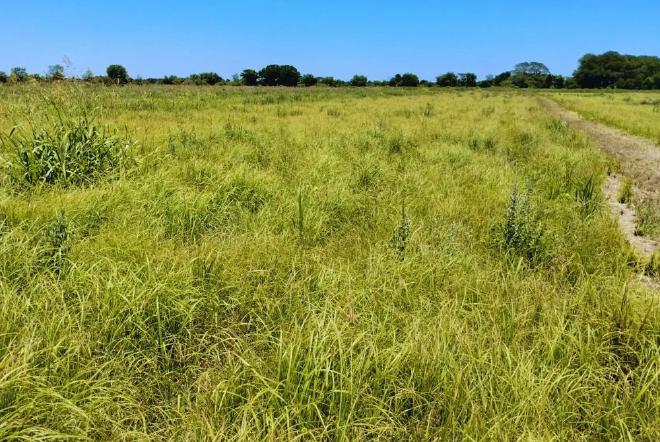

To reserve fodder for winter is a challenge in every livestock field of the Chaco region, in Argentina. The usual conditions of low temperatures and low volume of rainfall make winters a period of fodder scarce, which is usually called ‘winter bump.’ Given the particular situation of this fall, the pastures that could serve as a reserve have not achieved their usual development due to the reduced amount of rainfall, which forces the producer to delay the process of generating reserves. Therefore, a group of specialists from INTA Colonia Benítez-Chaco- provides recommendations for the preparation of rolls and how to organize forage for pasture in paddocks.
Filling that bump is usually achieved by buying food, or reserving the surpluses of pastures that occur in the field itself, either by preparing rolls or reserving pastures so that this vegetation is consumed in the time of scarcity. Pamies warned that, if the producer decides to make the grass rolls, and makes a cut for his subsequent rolled at a time so close to winter, he entails a risk to plants. “Under normal conditions, the cut should have already been done, and not at this point of the year,” said Pamies, and put the focus on “not cutting the plants at a very low level, a remnant of at least 15 centimeters should be left, since there is very little time to recover the plants before the cold days arrive.”
The cutting height and the late growth of pastures leads to not much volume of grass to be able to roll, so the convenience of making them rolls must be analyzed, and then organize their use very well. “If we leave the yolks of the plants very exposed, frost will produce damage that will affect the spring regrowth,” Pamies said.
The entry of animals should only be allowed in July or August when the rest of the field decays in their ability to keep animals. “It is also worth choosing which category will have access to reserved pastures. To avoid the waste of fodder, and reduce damage to plants, it is advisable to divide the pastures for their progressive use, so that the animals consume more efficiently and avoid trampling that damages plants and waste fodder,” Pamies said.
When choosing the pastures to reserve, you should choose those pastures to obtain a more quality reservation. Regarding the species, the Clavel Pasto stands out for its aptitude to establish what is known as HEO standing (or reserved pasture) for subsequent grazing. This is one of those who maintains forage quality and digestibility for a longer time. In addition, by growing in low environments, with accumulation of water, it is less affected by frost.
In high environments, grass is a usual pasture in the area of Chaco that adapts well to the practice of reserving pastures. Because of its tolerance to low temperatures, it is not so affected by minor frost, and also presents a rapid recovery before the exit of winter.
“Whatever the method chosen to generate reserves for winter, more than ever we will have to prioritize the categories to which pastures will be allocated this winter since they will most likely be scarce reserves. For example, in a breeding farmland, the feeding of the Re -dried heifers should be prioritized,” Pamies concluded.

